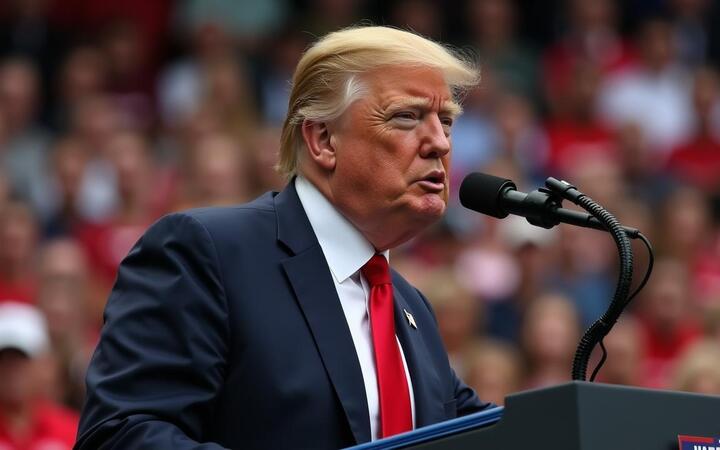President Donald Trump stated on Monday that tariffs on Canada and Mexico would move forward as planned next month, following an initial delay meant to give both countries time to address US concerns over border security.
“The tariffs are going forward on time, on schedule,” Trump said during a joint press conference with French President Emmanuel Macron.
The tariffs, originally set to take effect earlier, were postponed until March 4 as Canada and Mexico implemented new border measures.
Trump has framed the tariffs as a means to curb undocumented migration and illegal drug trafficking, particularly fentanyl.
Trump also reiterated his plan for reciprocal tariffs, which would match US levies on imports to the tariff and trade barriers imposed by other nations.
“It’ll be very good for our country, our country will be extremely liquid and rich again,” he said.
The White House has pointed to Canada, Mexico, and China as major sources of fentanyl shipments to the US, often arriving in small, low-value packages that evade inspection.
Efforts to close this de minimis loophole, which allows duty-free shipments under $800, have faced challenges due to the sheer volume of packages arriving at US airports daily.
Trump’s executive order on fentanyl directed Homeland Security Secretary Kristi Noem to provide regular updates on the issue to Congress and the White House.
Trump’s tariffs
Since initially imposing a 10% duty on Chinese imports and threatening 25% tariffs, Trump has introduced additional tariff measures that could further complicate border negotiations.
Among the planned increases:
- A flat 25% tariff on steel and aluminum, is set to take effect March 12, which revokes longstanding exemptions for Canada and Mexico.
- Tariff hikes extend to hundreds of downstream steel products.
- Proposed 25% tariffs on imports of automobiles, pharmaceuticals, and semiconductors.
- Orders for reciprocal tariffs to align US trade policy with foreign tariff rates.
These measures could accelerate a renegotiation of the US-Mexico-Canada Agreement (USMCA), which is scheduled for review by 2026.
Trump, who renegotiated NAFTA into USMCA in 2020, has increasingly expressed dissatisfaction with automobile imports from Canada and Mexico.
Mexico and Canada’s efforts at the border
This comes as Mexico and Canada have both introduced several measures in response to Trump’s tariff threats:
- Mexico has deployed 10,000 national guard troops to its northern border. President Claudia Sheinbaum has also urged the US to take action against gun smuggling into Mexico.
- Canada appointed Kevin Brosseau as a fentanyl czar to coordinate anti-smuggling efforts. Ottawa has also reclassified drug cartels as terrorist organizations and increased border surveillance with drones and helicopters.
- In December, Canada announced a C$1.3 billion ($913 million) boost in border security spending.
Canadian Prime Minister Justin Trudeau has remained in close contact with Trump, discussing border security and fentanyl trafficking in a call on Saturday.
While Trudeau has threatened retaliatory tariffs on C$155 billion ($107 billion) of US goods, including beer, wine, bourbon, and orange juice, he emphasized that Canada is committed to avoiding the tariffs by addressing US concerns.
Last week, Mexican Economy Minister Marcelo Ebrard also described a “constructive dialogue” with US officials, including Commerce Secretary Howard Lutnick, White House economic adviser Kevin Hassett, and US Trade Representative nominee Jamieson Greer.
The post President Trump confirms tariffs on Canada and Mexico will proceed appeared first on Invezz

